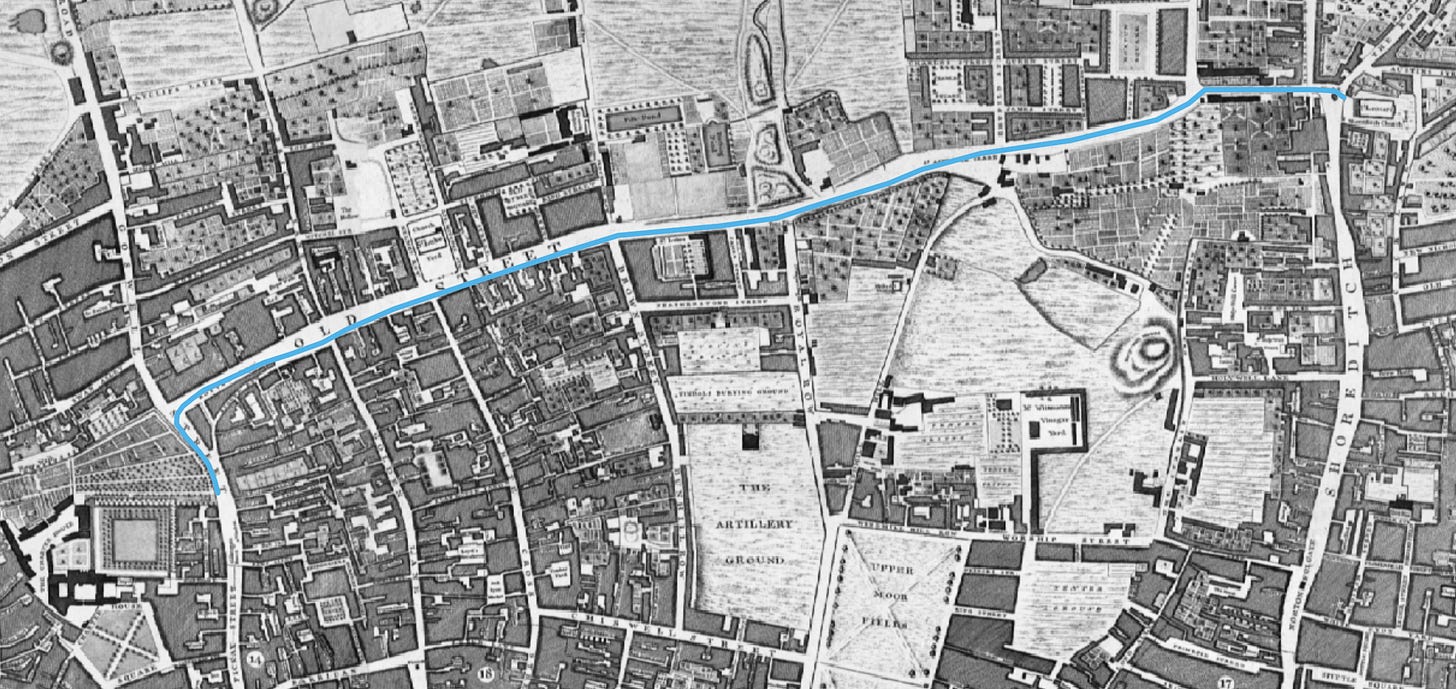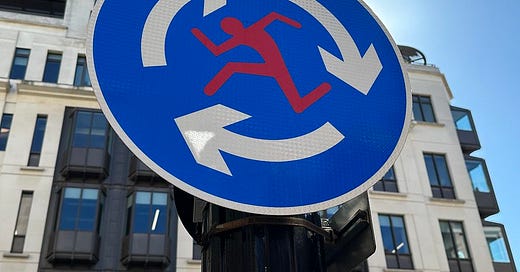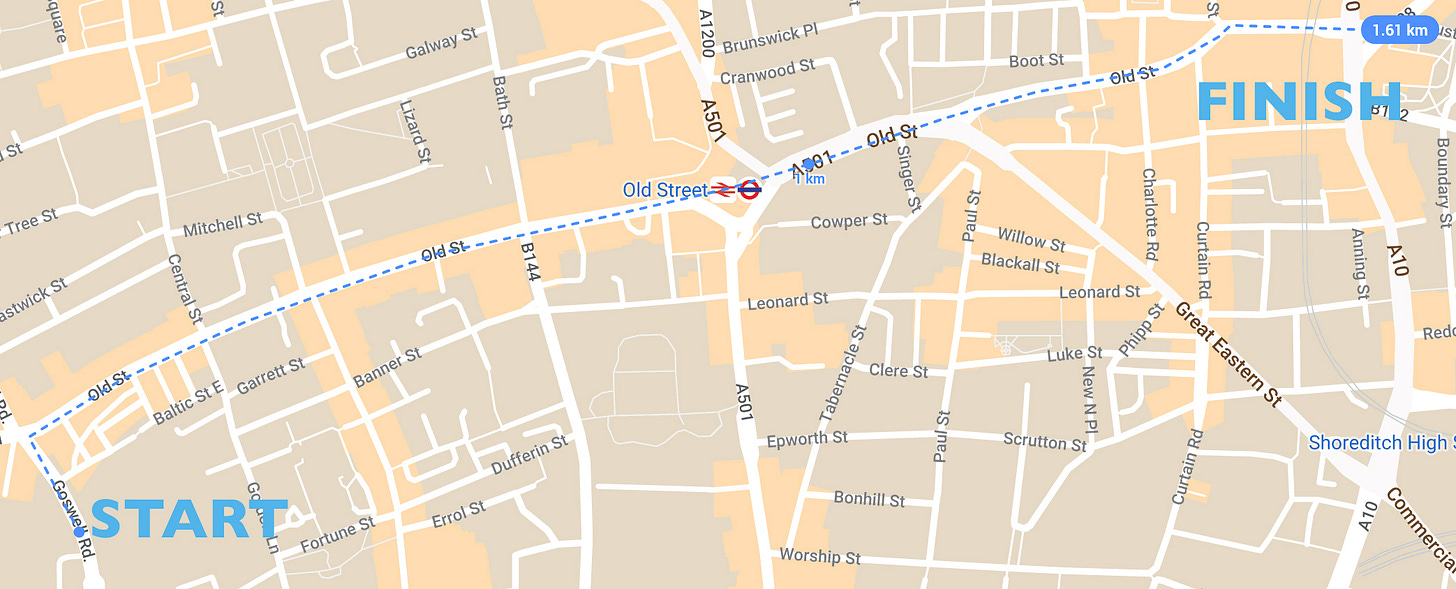London's 4-Minute Mile... In 1770
A dash along Old Street two centuries before Roger Bannister.
Welcome to the weekly edition for paying subscribers, with a generous teaser for everyone else…
Roger Bannister remains a household name, long after he became the first man to run a mile in under four minutes. That feat took place in 1954. But Londoner James Parrot claimed his own four-minute mile almost 200 years before. With the Paris Olympics in full swing, I want to share one of my favourite sporting stories from London’s history: the tale of a costermonger’s little-known dash along Old Street back in 1770.
That’s for the main section. First, the History Radar.
History Radar
Upcoming events of interest to London history fans.
🎭 YEOMEN OF THE GUARD: The latest production to grace the stage at Opera Holland Park is Gilbert and Sullivan's The Yeomen of the Guard, a comedy set in the Tower of London as a colonel awaits execution, accused of sorcery. Opera Holland Park, Charles Court Opera and the City of London Sinfonia join forces for the production. Runs 7-10 August.
🥦 CITY MARKETS: On 7 August, hear stories about the markets of the City of London, which have kept locals fed for centuries. This Guildhall Library talk covers how the markets evolved, as well as how they survived war, fire and pestilence. Watch in person at Guildhall Library, or online.
🚤 FAMILY FUN DAY: On 7 August, London Canal Museum holds a family fun day, including a craft workshop and a trip on a boat along the canal to St Pancras Lock and back. There's a fish theme to the workshop, which is inspired by wildlife and habitats along the water. Your ticket also includes access to the regular museum displays.
🔪 ONE ARMED JACK: Also on 7 August, attend the book launch of One-Armed Jack, a new publication by Sarah Bax Horton which uses original research and completely new analysis to name a suspect in the Jack the Ripper serial killer case. She argues that the suggested perpetrator had a broken left arm, which left him unable to work and was one of his triggers to kill as part of a serious physical and mental decline. Hear from the author at London Archives (formerly London Metropolitan Archives).
🤫 SILENT CEREMONY: Ian Visits tips us off that the ballot is now open to attend the ‘Silent Ceremony’. This annual ceremony, conducted in near silence, sees the affirmation of the new Lord Mayor of London. It’s one of those traditional and slightly bizarre ye olde events at which the Square Mile excels. The event is not until November, but the ballot is open now.
A Four-Minute Mile… in 1770
Costermongers — purveyors of fruit and veg — are better known for their runner beans than their record-beating runs. But James Parrot was different. Fit as a fiddle, the sprightly barrow boy reckoned he could run a mile in under four and a half minutes. As was common and customary in those days, a substantial wager hovered over proceedings. Parrot stood to win 15 guineas should he make the time, about a third of a typical costermonger’s annual income.
The race against time took place on 9 May 1770. According to the limited accounts we have, Parrot not only achieved his goal, but smashed it, covering the distance “in four minutes”. It was, perhaps, history’s first Four Minute Mile, almost 200 years before Roger Bannister clinched the record without dispute. But did it really happen? Let’s take a look at the evidence…
A dash along Old Street
Parrot chose a route along the northern City fringes, through the same area that would launch England’s first balloon flight 14 years later. The starting line was on Goswell Road (then Goswell Street) beside the wall of the Charterhouse. The finish was to be the gates of St Leonard’s church in Shoreditch. Hence, much of the course would take him along Old Street.
Here, I’ve sketched it out onto a map:

I also mocked up the route in Google MyMaps, which allows me to measure distances. It comes out as exactly 1.61km (a mile), if we assume the starting line was at the southern-most extent of Charterhouse Wall on Goswell Road, and that the finish was the gates to St Leonard’s.
Given the passage of over a quarter of a millennium, its arresting to see just how little the route has changed. Few buildings survives from that time, but Old Street still follows the same curves — especially that dog-leg into the finish. The only spoilsport is that wretched junction above Old Street tube. After years of roadworks, it is no longer a roundabout, but it would still present a significant obstacle to a Laura Muir or Josh Kerr hoping to repeat Parrot’s achievement.
So how come loads of people have heard of Roger Bannister, but James Parrot aspires to be an obscure footnote?






